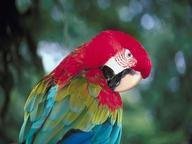Quiz Answer Key and Fun Facts
1. Which characteristic is not common to all parrots?
2. What is the maxilla?
3. Which type of cockatoo usually has brown-eyed females and black-eyed males?
4. What color are the rings around the eyes of the hyacinth macaw?
5. What is the most notable difference between the Catalina macaw and the blue and gold macaw?
6. Why might some people consider macaws to be cleaner birds than cockatoos?
7. To what country is the Goffin's cockatoo native?
8. What is the bulge on the neck called?
9. What is special about the hyacinth macaw?
10. What is something that macaws and African Greys have in common?
Source: Author
caught_a_saint
This quiz was reviewed by FunTrivia editor
crisw before going online.
Any errors found in FunTrivia content are routinely corrected through our feedback system.


